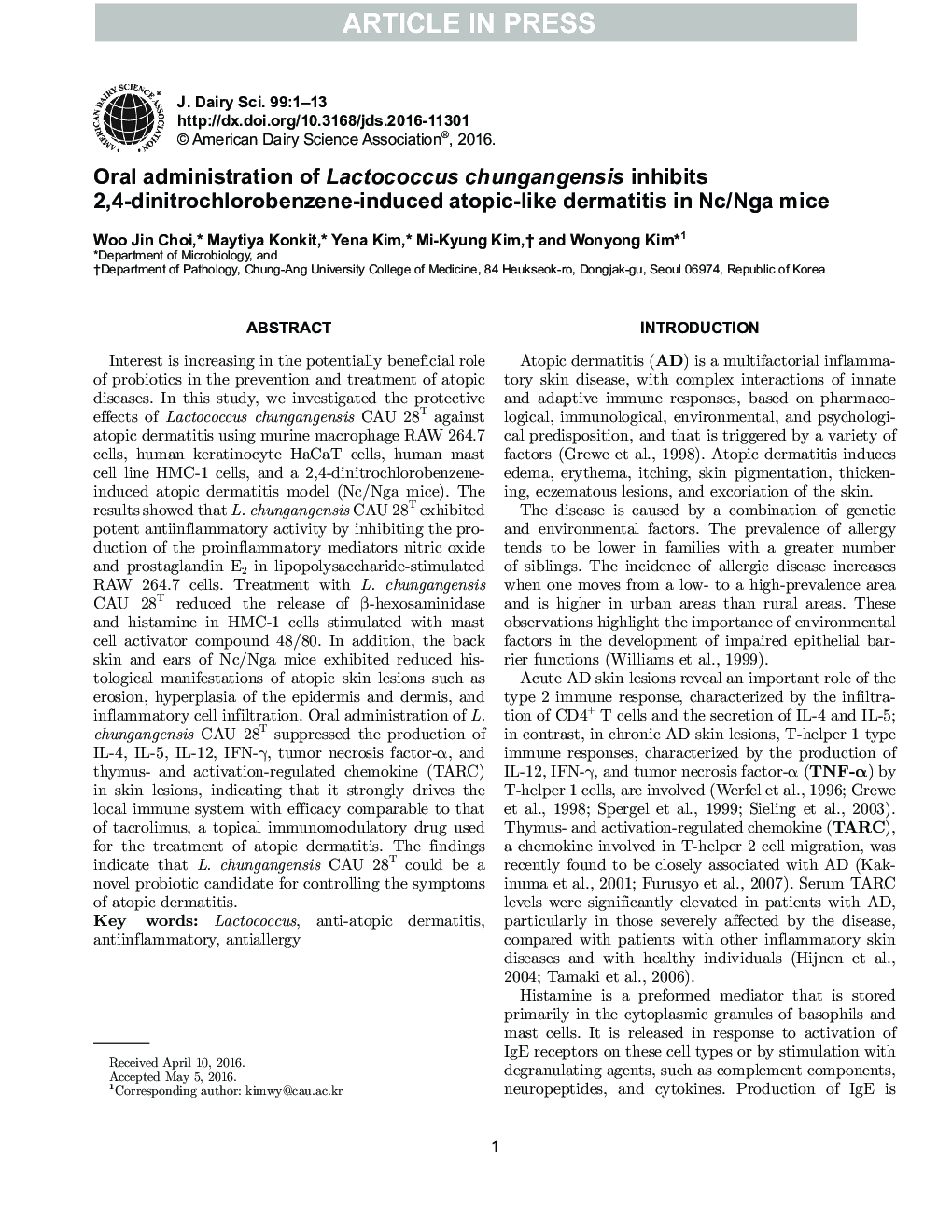| Article ID | Journal | Published Year | Pages | File Type |
|---|---|---|---|---|
| 5542801 | Journal of Dairy Science | 2016 | 13 Pages |
Abstract
Interest is increasing in the potentially beneficial role of probiotics in the prevention and treatment of atopic diseases. In this study, we investigated the protective effects of Lactococcus chungangensis CAU 28T against atopic dermatitis using murine macrophage RAW 264.7 cells, human keratinocyte HaCaT cells, human mast cell line HMC-1 cells, and a 2,4-dinitrochlorobenzene-induced atopic dermatitis model (NC/Nga mice). The results showed that L. chungangensis CAU 28T exhibited potent antiinflammatory activity by inhibiting the production of the proinflammatory mediators nitric oxide and prostaglandin E2 in lipopolysaccharide-stimulated RAW 264.7 cells. Treatment with L. chungangensis CAU 28T reduced the release of β-hexosaminidase and histamine in HMC-1 cells stimulated with mast cell activator compound 48/80. In addition, the back skin and ears of NC/Nga mice exhibited reduced histological manifestations of atopic skin lesions such as erosion, hyperplasia of the epidermis and dermis, and inflammatory cell infiltration. Oral administration of L. chungangensis CAU 28T suppressed the production of IL-4, IL-5, IL-12, IFN-γ, tumor necrosis factor-α, and thymus- and activation-regulated chemokine (TARC) in skin lesions, indicating that it strongly drives the local immune system with efficacy comparable to that of tacrolimus, a topical immunomodulatory drug used for the treatment of atopic dermatitis. The findings indicate that L. chungangensis CAU 28T could be a novel probiotic candidate for controlling the symptoms of atopic dermatitis.
Keywords
Related Topics
Life Sciences
Agricultural and Biological Sciences
Animal Science and Zoology
Authors
Woo Jin Choi, Maytiya Konkit, Yena Kim, Mi-Kyung Kim, Wonyong Kim,
